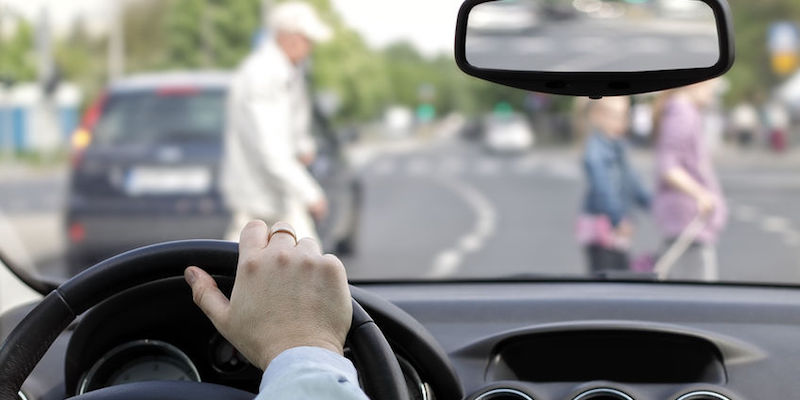Over the last decade, pedestrian accident deaths are up 35% nationwide and 75% in Colorado. What factors increase the risk for pedestrians?
51 Deaths in 2009, 90 in 2018
Over the past decade, annual Colorado pedestrian deaths have increased by 75%, according to the Colorado Department of Transportation (CDOT). Across the United States, there were 4,414 pedestrian fatalities in 2008. In 2017, there were 5,977, a 35% increase.
Reasons for More Pedestrian Deaths
The CDOT report identifies several possible causes of the increase in pedestrian accident fatalities in Colorado.
- Population growth. The state’s population grew nearly 17% in the last decade, the seventh-fastest pace of all states.
- More miles being driven. Colorado has over 100,000 square miles of land, and many workers commute to and from Denver, Boulder, Colorado Springs, Fort Collins, Pueblo, and other cities and towns.
- The popularity of walking. More and more people are out walking in Colorado, especially senior citizens who no longer drive. Senior citizens constitute 13% of the population but 23% of all pedestrian fatalities.
- Night driving. Pedestrians are usually harder to see at night, making night driving risky. The rate of fatal accidents and alcohol-impaired driving in the state increases dramatically during nighttime hours.
- Smartphones. Colorado prohibits texting while operating a motor vehicle. But in 2017, the law was changed to apply only when texting exacerbates careless driving. It is now legal to text while stopped at a red light or stuck in traffic.
- The prevalence of SUVs. According to a Hartford Insurance report, nine of the top 10 most popular vehicles are SUVs, which are generally more deadly when they hit pedestrians.
- Slow upgrades. Although many roads in Colorado and especially Denver could use an upgrade to improve safety, changes have been slow to come. When the Denver Streets Partnership reviewed the city’s progress toward its Vision Zero pledge to end traffic fatalities by 2030, Denver earned a “C” on its annual report card.
How much do pedestrian detection systems help?
One way to reduce pedestrian fatalities is by equipping vehicles with pedestrian detection systems, which contain sensors for detecting objects, including people, in the road. These systems are designed to respond to obstacles in the road faster than a human driver. They are currently standard in about a third of all new vehicles and are offered as options in another third.
However, according to the American Automobile Association, pedestrian detection systems are almost useless at night, when about 75% of pedestrian fatalities occur. Performance of the systems was found to be impaired when the vehicle is traveling at higher speeds and at other critical times. When speed increased from 20 to 30 mph, the risk of pedestrian injury or death more than doubled. When a vehicle turned right into the path of a pedestrian, the systems failed to react at all.
The researchers recommend further development of pedestrian detection systems to improve their effectiveness at night and at other times when drivers are most likely to encounter pedestrians.
If you or a loved one have been injured in an accident, contact the Law Offices of Daniel R. Rosen, or call (303) 454-8000 or (800) ROSEN-911 to schedule your free initial consultation with an experienced personal injury attorney.

